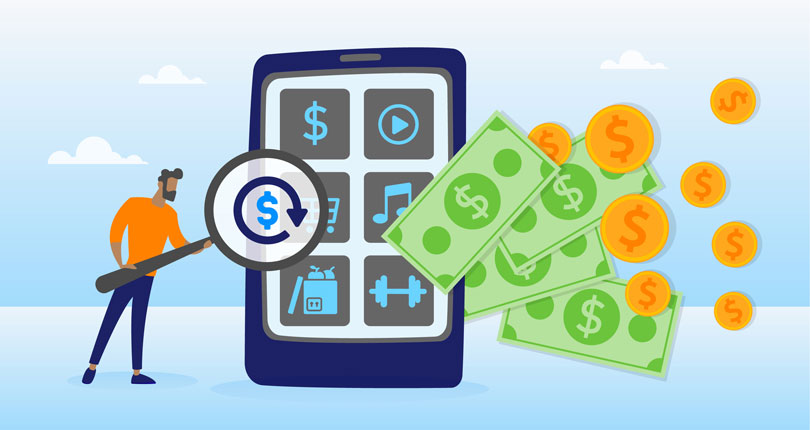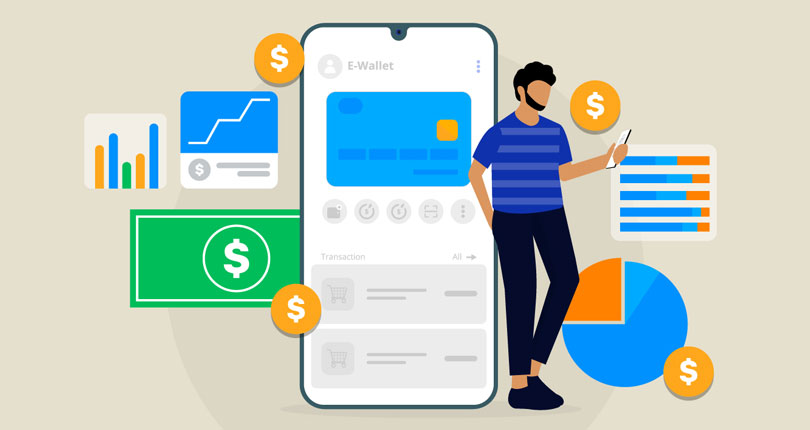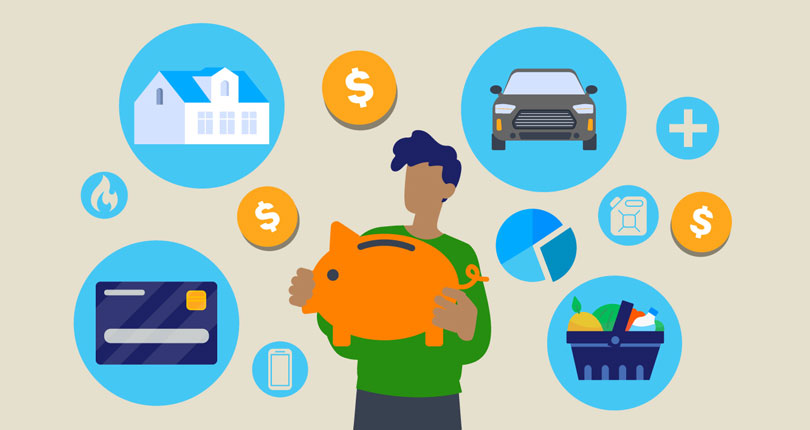The Cost of Unused Subscriptions 2024
TV and movie subscription services like Netflix and Disney+ continue to surge in popularity. According to the latest data by Statista, 83% of consumers in the U.S. subscribe to at least one platform. [1] Statista, ‘Share of consumers who have a subscription video-on-demand (SVOD) service in the United States from 2015 to 2023’ https://www.statista.com/statistics/318778/subscription-based-video-streaming-services-usage-usa/ However, as new competitors emerge and a person’s viewing habits change, many people end up with subscription services that sit unused.
To find out the true cost of subscriptions and the price Americans pay for leaving them unused, a survey on behalf of Self Financial collected views from 1,106 Americans who have active paid subscriptions.
The results highlight the most popular subscription services, the price attached to them, and how many paid subscriptions are going unused overall.
Key findings
- The average household has 4.1 active paid subscriptions — down from 4.4 in 2023.
- Most people reported spending $40.39 monthly on average for their paid subscriptions — down from $52.97 in 2023.
- 85.7% of people have at least one paid subscription going unused each month.
- The monthly average value of unused paid subscriptions is $32.84 — an increase from $25.34 in 2023.
- Amazon Prime is the most common paid subscription that people haven’t used in the past 30 days (30.1%)
- Netflix is the most unused TV streaming service, with Disney+ in second position.
- 72.1% of streaming users have made changes or are looking to alter their subscription choices based on new anti-password-sharing rules.
Section 1: Paid subscription services
To learn more about Americans' consumption habits regarding paid subscription services, a survey on behalf of Self Financial asked respondents a series of questions about the current subscriptions they have in place and the impact these have on their finances and everyday lives.
Most households have 4.1 paid subscriptions active
The number of subscriptions people have can differ hugely based on a number of factors, including household income, expenses, and the amount of free time a person has.
The survey found that most people had 4.1 paid subscription services active in a typical month. This is less than the average of 4.4 when the survey was conducted previously in 2023. Some people may cancel and change subscriptions each month, so respondents were asked to answer in relation to a typical month in their household.
More than half of people (53.6%) prefer to pay for their subscriptions monthly and one in 10 (9.8%) opt for one large annual chunk payment, other respondents indicated other payment periods or may factor them paying others who pay for the subscription itself.
These yearly payments are often cheaper than monthly payments, meaning most people don’t opt to claim such financial benefits. For example, Disney+ Premium’s monthly plan as of April 2024 costs $13.99 but paid annually it costs $139.99, a saving of $27.89. It is, however, important to note that this would only be a saving if a user was 100% sure they were going to use the platform for all 12 months.
$40.39 is the average monthly cost of paid subscriptions in the U.S.
Subscription models can come in all shapes and sizes, designed around the customer's needs. But how much on average are Americans spending on their paid subscription each month?
The survey found that the average monthly cost of paid subscriptions in the U.S. is $40.39, which is down by almost a quarter (-23.7%) from the $52.97 average in 2023’s survey.
When analyzing the most common price ranges of paid subscriptions, it seems that almost half of subscribers (48.2%) spend between $21 and $40 on subscriptions each month. Less than one in 10 (7.3%) spend more than $100 per month on streaming.
3.2 people on average are using paid subscriptions in the home
A big draw for people when using subscription services is that they are able to share their experience with their household. The survey asked respondents how many people are using subscriptions within their homes.
Almost two-thirds (62.8%) said they currently share subscriptions with three or four people indicating subscriptions are rarely for the individual.
Subscriptions are good for the soul, say users
There are a whole host of reasons people may choose to subscribe to a subscription service. From this research, it seems that users choose subscription services to improve their well-being. 51.9% said that subscription services better their quality of life.
The quality of streaming services appears to be another big pull for users. 51.8% said that they like their subscription because of this. Movies and shows produced by service providers continue to earn industry acclamation, with Netflix content earning 22 Emmy awards in 2024. [2] IMDb, ‘All the 2024 Netflix Emmy Winners: From Beef to Dahmer’ https://www.imdb.com/news/ni64395633/
| Top benefits of paid subscription services |
| Rank |
Reason |
Percentage of respondents |
| Rank |
Reason |
Percentage of respondents |
| 1 |
Improves quality of life |
51.9% |
| 2 |
Quality of subscription |
51.8% |
| 3 |
Convenience |
32.6% |
| 4 |
Good value for money |
32.1% |
| 5 |
Makes me happy |
31.0% |
| 6 |
Makes others happy |
28.6% |
| 7 |
Treat for myself |
28.1% |
| 8 |
Consider it a hobby |
25.7% |
| 9 |
Enjoy the surprise/newness |
23.7% |
Section 2: Unused paid subscriptions
To better understand how many paid subscriptions are going unused the survey asked the subscribers surveyed if any of their paid subscriptions were still being paid for each month despite not being used.
The survey defines ‘unused’ paid subscriptions as those being paid for but that had not been used in the past 30 days. This took into account the popularity of monthly paid subscription payment schedules which 70% of people prefer [3] Forrester, ‘What consumers like and detest about subscriptions’ https://www.forrester.com/blogs/what-consumers-like-and-detest-about-subscriptions/ and which indicates that at least one monthly payment would have been wasted if the subscription was not used for 30 days.
The vast majority (85.7%) of survey respondents said that they have at least one paid subscription going unused, while 14.3% said they currently use all their subscriptions each month.
Americans have 3.3 paid subscriptions going unused
Next, the survey asked those who had unused subscriptions how many paid subscriptions they currently have that haven’t been used in the past 30 days.
The results showed that most subscribers have an average of 3.3 subscriptions that they aren’t using each month.
Subscribers are wasting an average of $32.84 per month on unused paid subscriptions
The survey also sought to find out how much people were spending on their unused subscriptions each month.
The monthly average value of unused paid subscriptions was revealed to be $32.84, an increase from 2023’s average of $25.34.
Almost one in six (14.4%) plan to still pay for unused subscriptions
The survey asked those who had paid subscriptions that went unused if they had considered canceling them. Almost one in six (14.4%) were happy to continue paying for these unused subscriptions, while the other 85.6% said they would take action and cancel these subscriptions in the near future. It is possible the survey caused some individuals to review their subscriptions while responding.
More than a quarter of people cancel subscriptions ‘due to high cost of living’
For those intending to cancel or those who had canceled paid subscriptions in 2024, the survey looked to understand the exact reasons behind such decisions.
While choosing better alternatives (42.2%) was the most common reason, it seems that many Americans are canceling their unused subscriptions due to cost reasons. Almost three in 10 (29.4%) said that the price of subscriptions had increased too much, while 27.1% agreed that today’s high cost of living necessitated them cutting back on services they don’t use.
| Reasons Americans are canceling unused paid subscriptions |
| Rank |
Subscription model |
Percentage of respondents |
| 1 |
Found better alternative |
42.2% |
| 2 |
Price has increased too much |
29.4% |
| 3 |
High cost of living |
27.1% |
| 4 |
Only needed for limited time |
27.1% |
| 5 |
Free trial ran out |
26.8% |
| 6 |
Looking to reduce outgoings |
25.3% |
| 7 |
Not enough use |
23.1% |
| 8 |
Doesn't offer value anymore |
22.1% |
| 9 |
Bad customer service |
20.9% |
Most people don’t cancel subscriptions because of automatic renewals (39.3%)
When it came to why some may not have canceled subscriptions in the past, or are currently struggling to cancel services, having automatic renewals set-up was the main obstacle cited by respondents. For example, a grocery delivery pass automatically renews each month which causes people to forget the need to cancel.
One in three (33.5%) admitted that the main reason for them not canceling their unused paid subscriptions was a lack of time to dedicate to the process. While 35.3% felt that the company made it difficult to cancel the subscription. Some companies may require you to call them to cancel, rather than actioning this in the account settings for example.
| Top 5 reasons Americans are putting off canceling unused paid subscriptions |
| Rank |
Reason for not canceling |
Percentage of respondents |
| 1 |
Auto renewals |
39.3% |
| 2 |
Forgot to cancel |
36.4% |
| 3 |
Lack of time |
35.8% |
| 4 |
Found cancelation process difficult |
35.3% |
| 5 |
Already paid for longer period |
31.5% |
Amazon Prime is the most common unused paid subscription
The survey asked the respondents who currently have unused subscriptions which of the 10 most popular paid platforms [4] Statista, ‘Share of consumers who were subscribed to leading subscription services in the United States in 2021’ https://www.statista.com/statistics/1004527/leading-subscription-services-used-by-consumers-us/#statisticContainer (non-streaming) they subscribed to but had not used in the past 30 days.
Amazon Prime was shown to be the most common paid subscription that they hadn’t used in the past 30 days (30.1%). Walmart+ came in second place, with 26.9% of respondents leaving their subscription unused.
| Top 5 paid subscriptions going unused |
| Rank |
Subscription model |
Percentage of respondents |
| 1 |
Amazon Prime |
30.1% |
| 2 |
Walmart+ |
26.9% |
| 3 |
Chewy |
22.1% |
| 4 |
Dollar Shave Club |
20.9% |
| 5 |
Shipt |
20.5% |
Netflix is the most common unused paid video streaming subscription
The survey also asked these respondents with unused subscriptions which popular video streaming platforms (according to Tom’s Guide) [5] Tom’s Guide, ‘The best streaming services in 2023’ https://www.tomsguide.com/us/best-streaming-video-services,review-2625.html they subscribed to but had not used for the past 30 days.
Netflix was found to be the streaming service that most people weren’t regularly using, with 28.2% not watching its content in the last month. Disney+ (27.6%) and Amazon Prime Video (26.0%) were also among the streaming services most unused by the survey’s respondents.
| Top 10 paid video streaming subscriptions going unused |
| Rank |
Subscription model |
Percentage of respondents |
| 1 |
Netflix |
28.2% |
| 2 |
Disney+ |
27.6% |
| 3 |
Prime Video |
26.0% |
| 4 |
YouTube TV |
23.2% |
| 5 |
Apple TV+ |
21.5% |
| 6 |
Peacock |
19.0% |
| 7 |
Paramount+ |
19.0% |
| 8 |
DirectTV |
18.5% |
| 9 |
Sling TV |
18.1% |
| 10 |
Hulu |
17.7% |
Section 3: Sharing paid subscription logins
Sharing paid subscriptions for music, movies, and TV between family members is a good way to reduce costs while still keeping the benefits of the service. Some services, like Netflix however, are actively discouraging this with 2023 measures stopping password sharing outside of physical households. Disney+ followed suit in March 2024 and Max is expected to implement similar account lockdowns in 2024. [1] Statista, ‘Share of consumers who have a subscription video-on-demand (SVOD) service in the United States from 2015 to 2023’ https://www.statista.com/statistics/318778/subscription-based-video-streaming-services-usage-usa/
The survey asked the subscriber respondents if they shared their logins, or were recipients of shared logins, for paid subscriptions with people outside of their household. The majority (82.6%) said they did, while 17.4% said they didn’t.
46% of paid subscription customers share logins as they can’t afford their own account
The most popular reasons to share a subscription service revolve around money. Almost half (46%) said they couldn’t afford the subscription on their own, while a third (33.6%) are sharing with members of their own family or friends to spread out the service’s usage within a household.
| Top reasons for sharing paid subscription service logins |
| Rank |
Reason for sharing logins |
Percentage of respondents |
| 1 |
I can't afford it on my own |
46.0% |
| 2 |
To share the experience with friends/family |
33.6% |
| 3 |
To split the cost |
33.6% |
| 4 |
To gain access to more content libraries |
33.3% |
| 5 |
To save money |
32.8% |
| 6 |
Price increases of subscription services |
31.2% |
72% of password-sharers are going to make account changes
Of those who said they use a shared Netflix, Disney+, or Max, account, 27.9% said they’re not planning on making changes to their account setup as streaming services crack down on password sharing among their subscriber base.
A separate 16.4% said they were planning to cancel their subscription, 25.8% said they were planning to stop sharing an account, while three in 10 (29.9%) said that they would consider an alternative streaming service to meet their needs.
Methodology
The survey was conducted on 03/21/2024 asking 1,108 Americans from a range of backgrounds, questions related to subscription services. Only people whose household pays for at least one subscription service were selected for the survey. For some questions, respondents were able to select multiple answers, so the results do not all add up to 100%.
To establish how many paid subscriptions are going unused, the survey conducted on behalf of Self Financial asked a number of questions in the survey related to paid subscription services including cost, usage, subscription model and preference and household income.
‘Unused’ paid subscriptions were defined as those that were being paid for but had not been used in the last 30 days to tie into the popularity of 30-day trials.
Sources






